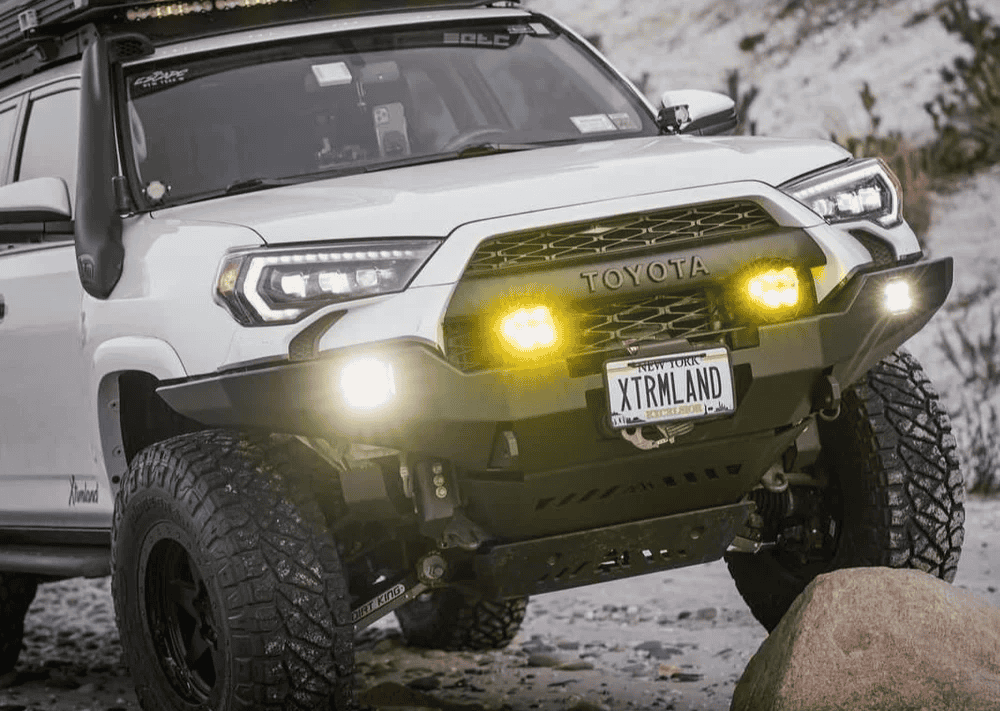Overland Vehicles

An inverter charger system is the electrical translator in a mobile or off grid rig. It converts battery power to household style electricity for outlets and appliances, and when shore power is available it flips roles to recharge the battery bank. A built in transfer switch chooses the best source automatically so you do not have to rewire anything at camp or in a shop bay. The result is steady power for fridges, induction cooktops, laptops, and tools without a generator droning in the background.
At its core, the inverter side turns direct current from batteries into alternating current. Pure sine wave output is the standard for sensitive gear, keeping compressors, chargers, and electronics happy. The charger side uses multi stage charging to protect batteries, typically bulk, absorption, and float, and some units add an equalize mode for specific chemistries. Together with a transfer switch, the system keeps loads live while either pulling from batteries or topping them off from a pedestal or generator.
Start with your continuous load. Add up watts for devices that run at the same time and protect the total with a margin of about twenty percent. Consider surge demands for compressors and power tools which can spike two to three times their running draw for a second or two. Most van and overland builds land between two thousand and three thousand watts of inverter capacity for 120 volt systems.
System voltage matters. A 12 volt bank is common and simple, but current gets high at larger loads which means thick cables and careful routing. A 24 volt bank halves the current for the same power and eases cable size and voltage drop. Match the charger profile to your battery chemistry. Lithium iron phosphate accepts higher charge rates and benefits from precise absorption termination and no float, while lead acid prefers a gentler approach and regular float maintenance.
Inverters are most efficient near moderate to high load. Idle draw can be noticeable, so use eco or search modes where appropriate. Short, thick cables, clean lugs, and solid bus bars reduce losses and heat. Ventilation around the chassis keeps components cool and extends lifespan.
Mobile systems need correct neutral switching so ground fault protection works and you avoid parallel bonds. The transfer switch should break and make safely, with clear priority rules. When on shore power, the pedestal’s protection should govern. When on battery, the inverter becomes the source and must provide the correct bonding scheme.
Overcurrent protection is non negotiable. Place a main fuse near the positive battery post, commonly a class T on higher power banks. Size ANL or MIDI fuses for branch circuits and protect both inverter inputs and charger feeds. Use marine grade cable, heat shrink, and proper crimp tools to avoid hot spots and voltage drop.
Grounding and bonding deserve attention. Tie negative to a common bus, bond to chassis at a single point, and follow the inverter manufacturer’s guidance on neutral to ground bonds. GFCI outlets at the first receptacle downstream add a layer of protection for damp environments. Keep battery sensors and shunts on the negative side for accurate state of charge readings.
An inverter charger does not replace a solar controller or DC to DC charger. Each device owns its lane, and they coordinate through the battery. Set charging voltages and limits so sources do not fight each other. A smart shunt based monitor helps you watch trends rather than guess from a voltmeter.
Keep cable runs short, especially on the DC side. Mount the unit where airflow is easy and dust is limited. Avoid cramped lockers with blankets and soft goods. Use strain relief and service loops for components that may need removal or inspection.
Mismatched charger profiles and battery chemistry will shorten battery life. Undersized cabling can cause low voltage cutouts under load. Skipping a transfer switch invites nuisance trips and dangerous backfeeding. A quick paper plan and a labeled diagram prevent expensive changes later.
If you prefer field proven design, OZK Customs integrates inverter charger systems into complete power plans for adventure vans, overland trucks, and mobile work units. Our team balances power needs, weight, serviceability, and future upgrades so your rig runs quietly and safely day after day. Explore Overland rigs by OZK to see how electrical systems support real travel.
Need something tailored to tools, medical devices, or content creation gear. Our builders spec battery banks, DC to DC charging, solar, and distribution with clean labeling and documentation. See the path from idea to install on our Custom overland upfit page.
Curious about process, materials, and testing standards. Learn how we approach reliability and customer support at Why choose OZK Customs. When you pick up your rig in Northwest Arkansas, we walk you through operation, maintenance, and safe practices so your first night out feels easy.
Tell us what you want to run, how long you stay off grid, and the climates you cross. We will turn that story into a right sized inverter charger system with safe wiring, smart charging, and clear monitoring so you can focus on the ride.
Ready to power your build the right way? Tell us how you travel and what you need to run. We will spec, install, and test a safe, quiet inverter charger system that fits your rig and your routes. Fill out the form and let OZK Customs turn your power plan into a reliable reality.
ADDRESS:
6159 E Huntsville Rd, Fayetteville, AR 72701
PHONE:
(479) 326-9200
EMAIL:
info@ozkvans.com